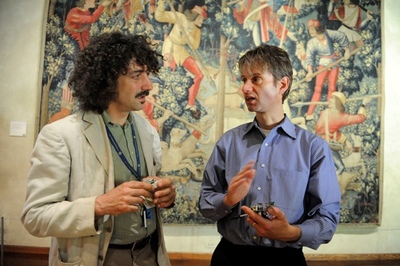 |
Environmental Wireless Sensors at the Cloisters - Meeting at the Metropolitan Museum of Art's Cloisters Museum in New York, Paolo Dionisi Vici, Associate Research Scientist in the Department of Scientific Research at The Metropolitan Museum of Art and Hendrik Hamann, Research Manager at IBM , discuss the implementation of a new environmental sensor network for buildings which will help the Cloisters Museum preserve some of the world’s great historic treasures and artwork.
Courtesy of IBM |
| |
New York, USA - June 09, 2011
IBM (NYSE: IBM)
and The Metropolitan Museum of Art today announced the
successful installation of a new wireless environmental sensor network at the Museum called Low-Power Mote that will help preserve the
works of art in its world-renowned, encyclopedic collection.
This technology has recently been installed and is currently being tested at
The Cloisters museum and gardens, the branch of the
Metropolitan Museum devoted to the
art and architecture of medieval Europe.
Located in northern Manhattan, The Cloisters has a collection of approximately
3,000 works of art, most dating from the
12th through the 15th century, ranging from
illuminated manuscripts to polychrome wood sculptures, paintings, and
tapestries.
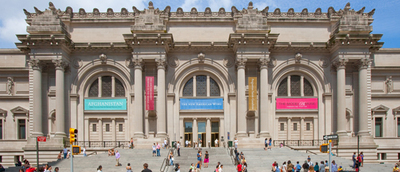 |
The Metropolitan Museum of Art is one of the world's largest and finest art museums. Its collections include more than two million works of art spanning five thousand years of world culture, from prehistory to the present and from every part of the globe.
Founded in 1870, the Metropolitan Museum is located in New York City's Central Park along Fifth Avenue (from 80th to 84th Streets). Nearly five million people visit the Museum each year.
Courtesy of the Metropolitan Museum of Art |
| |
"This pilot project has the potential to become an important tool in the Metropolitan Museum's ongoing efforts to achieve the best environmental conditions for the works of art in our care," said
Paolo Dionisi Vici, Associate Research Scientist in the Department of Scientific Research at The Metropolitan Museum of Art.
"This new technology offers a real-time, detailed picture of the environment, and we are now working on an upgrade that will also monitor the actual reactions of the works of art to the environment. These developments have the potential for us to create 'sensing environments' for works of art that will provide constant feedback, enabling conservators, curators, and facilities experts to fine-tune their approaches to establishing and adapting as necessary the exhibition and storage conditions."
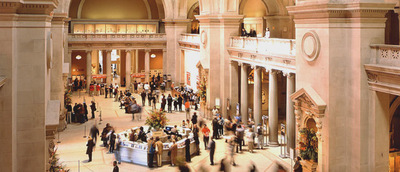 |
The Metropolitan Museum of Art interior
Courtesy of the Metropolitan Museum of Art |
| |
Works of art are very sensitive to fluctuations in temperature, relative humidity, and other environmental conditions.
To preserve them for posterity, the climate in the galleries is tightly controlled and sealed cases are used for the most delicate objects.
Working with experts at the
Metropolitan Museum to address the complex environment associated with art conservation, scientists from
IBM Research are implementing the comprehensive solution called
Low-Power Mote technology.
This involves time-stamped data collection through a wireless sensor network, data storage with real-time visualization, modeling, and analysis.
This results in an ultra-low-power physical analytics technique that, combined with cloud computing capabilities, allows micro-environment sensing and more precise and accurate modeling.
In the initial phase,
IBM has deployed 100 sensors in strategic locations in several adjacent rooms of the
Museum, allowing for high-definition monitoring of the environment that captures the subtle dynamics of the space.
Sensors measure temperature, humidity, air flow, contamination levels, door positions, light levels, and more. All of the data is fed into a software application where it is modeled to provide detailed
real-time 3D temperature, humidity, and
dew-point distributions.
A distinct feature of this technology lies in its unique analytical capabilities, which leverage several physics-based models for optimum operation, and controls and make it possible to generate and visualize hydrodynamic flows in real time.
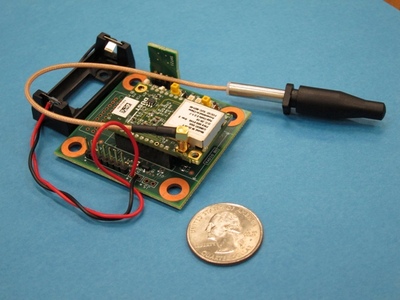 |
New IBM sensors in use by The Metropolitan Museum of Art, capture subtle fluctuations in temperature, humidity, air flow, contamination levels, door positions, light levels, and more. The data is fed into a software application where it is modeled to provide detailed real-time 3D images to art conservators.
Courtesy of IBM |
| |
With this unique analytics technology, the
Metropolitan Museum's scientists and conservators will be able to probe localized variations in climate developing detailed microclimate maps of the galleries at
The Cloisters.
The measurements will also enable the
Museum's scientists to correlate the reaction of art objects to environmental changes in order to develop object-oriented tests and predictive models for art preservation more accurately.
This advance, which represents a shift from monitoring the environment to creating a sensing environment, will eventually be expanded to the
Museum's main building on Fifth Avenue at 82nd Street in Manhattan as well.
Next steps for this technology include expanding over additional galleries of the museum, with the goal of developing an improved understanding of the effect of micro-climatic variations eventually leading to a fundamentally better approach to preservation of the art objects, throughout the museum.
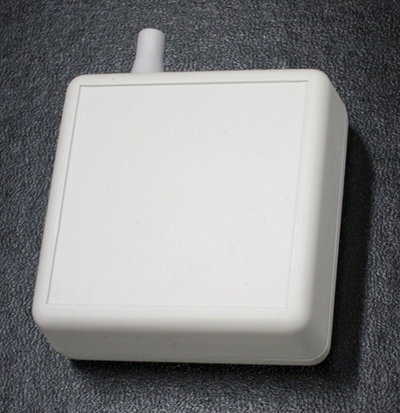 |
IBM's Low-Power Mote technology which have been installed recently at The Metropolitan Museum of Art can predict environmental conditions within buildings and optimize microclimates for preservation of works of art.
Courtesy of IBM |
| |
"This project is a prime example of IBM's physical analytics capabilities that can help predict and forecast change, and we're pleased we can collaborate with the Metropolitan Museum to preserve treasured artifacts for generations to come," said
Hendrik Hamann, research manager, IBM Research.
"This technology has emerged out of IBM's work on the energy optimization of industrial spaces such as computer datacenters, and represents a migration of this approach to other industrial and public spaces that can employ a vast variety of networked sensors. Whether it be an art object, or any other monitoring criteria within a building or a campus, building operators need to gain a better understanding of the environmental conditions that are impacting their spaces. IBM's Low-Power Mote Technology can help users gain access to real-time physical data and its interpretation, enabling quick and accurate predicts."
Contacts information
Randy Zane
IBM Media Relations
914-945-1655
rzane@us.ibm.com
Elyse Topalian or Egle Zygas
The Metropolitan Museum of Art
212-570-3951
communications@metmuseum.org
Source: IBM
http://www-03.ibm.com/press/us/en/pressrelease/34696.wss
ASTROMAN magazine

